![]()
![]()
![]()
Use LEFT and RIGHT arrow keys to navigate between flashcards;
Use UP and DOWN arrow keys to flip the card;
H to show hint;
A reads text to speech;
9 Cards in this Set
- Front
- Back

|
Eleven Avalokiteshvara, Tibet, 19th century
-had 1,000 hands -how he is shown in Tibet -11 symbolizes his principle virtues -there are 11 desires that obstruct your path to enlightenment -the top head is that of he Buddha he is an attendant to -each hand has an eye in the center that represents the minds eye/insight to the inside, all seeing, true sense of understanding -can see, understand and eliviate misery |
|
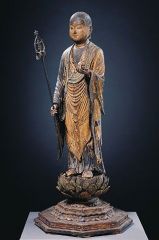
|
Jizo aka Kshitigarba, Japan, 13th Century
-bodhisattva -very simplified -shown as a monk -presides over hell -he has a bell on his staff to announce his presence -holds a wish granting jewel, represents spiritual wealth -through his spiritual wealth he allows us to see beyond the material -looks young and innocent -women meditate to him and dress the statues -protector figure of the young - |
|
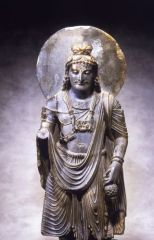
|
Maitreya, Pakistan, 3rd C.
-more Aryan looking -bodhisattva, but also a Buddha -he is the Buddha of our next life, but serves shakyamuni because he is still alive in this life -waiting for the right moment to teach enlightenment -dressed like a bodhisattva, but he does have some Buddha iconography like an ushnisha and a third eye |
|
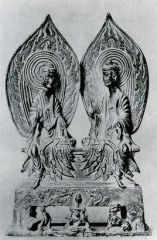
|
Shakyamuni and Prabutharathna, China, 6th C
-two figures on the same plane -they are exactly the same -two Buddhas -only see P. with the other one -Buddha of the past -lots of drapery shows that it is northern asian |
|
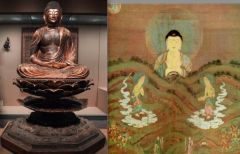
|
Amida, Japan 18th C(painting) and Amida, Japan 10th C(wood)
-Dhyani Buddhas – cosmic Buddhas: they represent an aspect of Shakyamuni - they look exactly like Shakyamuni -only way to tell them apart is by who is next to them -very specific attendants accompany -very popular in Japan -called “pure land Buddhism” -associated with the afterlife -when you die you say a particular prayer and then you are reborn into paradise -shown with two bodisttvahs who swoop in to save u |
|
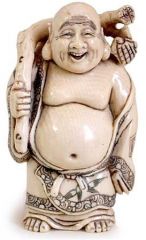
|
Hotei, 15thC, China, and 17thC. same
-reincarnation of matrea -associated with generosity -he is fat (generosity) -guardian of restaurants and bars |
|
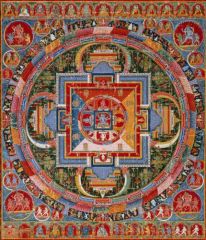
|
Tibetan Mandala, 15thc C, Buddhist
-painting -in the center is the Buddha that is that the center of this specific universe -a palaces with gates around the Buddha -all the figures change depending on who is in the center -meant to look like palaces -horror vaccui -vibrant colors -so much going on that you are focused on the center -helps for meditation. |
|
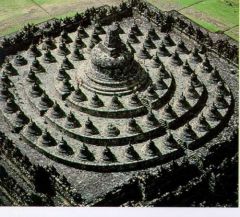
|
Borobodor, Indonesia, 9th Century
-body exploded into 5000 different jewels -one in each pagoda -looks like the Mandala, -gates, entryway -worlds largest stupah 400 feet on each side 100 feet tall -on the top 72 mini stupas with buddha |
|
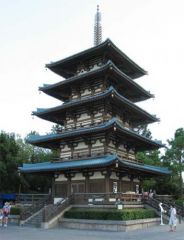
|
Horyuji, Japan, Buddish, Pagoda
-northern version of s stupa |

